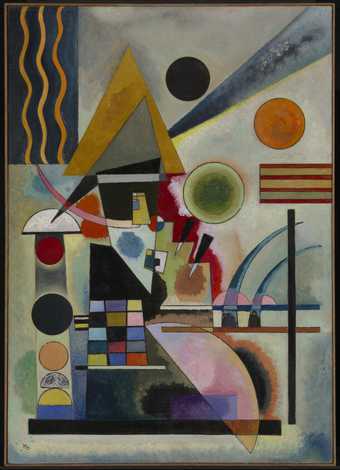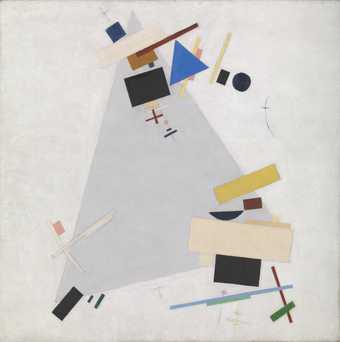
Wassily Kandinsky
Swinging (1925)
Tate

Naum Gabo
Construction in Space: Diagonal (1921–5, reassembled 1986)
Tate
The Work of Naum Gabo © Nina & Graham Williams / Tate, London 2023

Kazimir Malevich
Dynamic Suprematism (1915 or 1916)
Tate
The Russian constructivist painters Wassily Kandinsky and Kasimir Malevich and the sculptor Naum Gabo were pioneers of non-objective art. It and was inspired by the Greek philosopher Plato who believed that geometry was the highest form of beauty.
Non-objective art may attempt to visualise the spiritual and can be seen as carrying a moral dimension, standing for virtues like purity and simplicity. In the 1960s a group of American artists, including Sol LeWitt and Donald Judd, embraced the philosophy of non-objective art. By creating highly simplified geometric art out of industrial materials they elevated these to an aesthetic level. Their work became known as minimal art.
